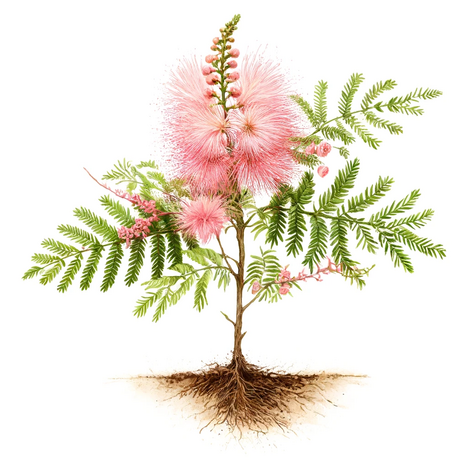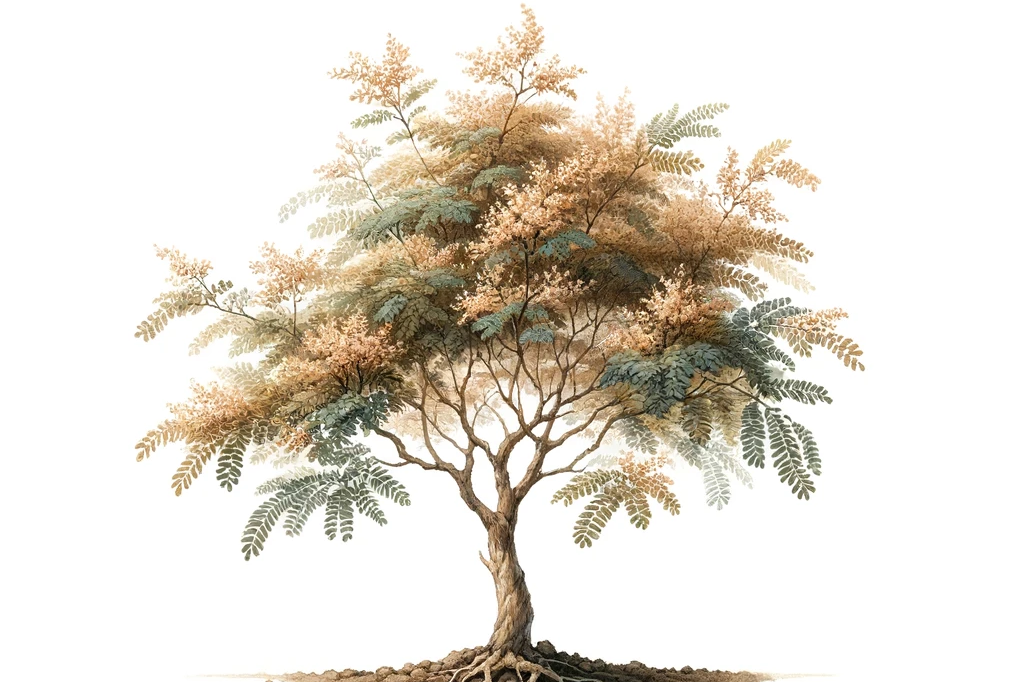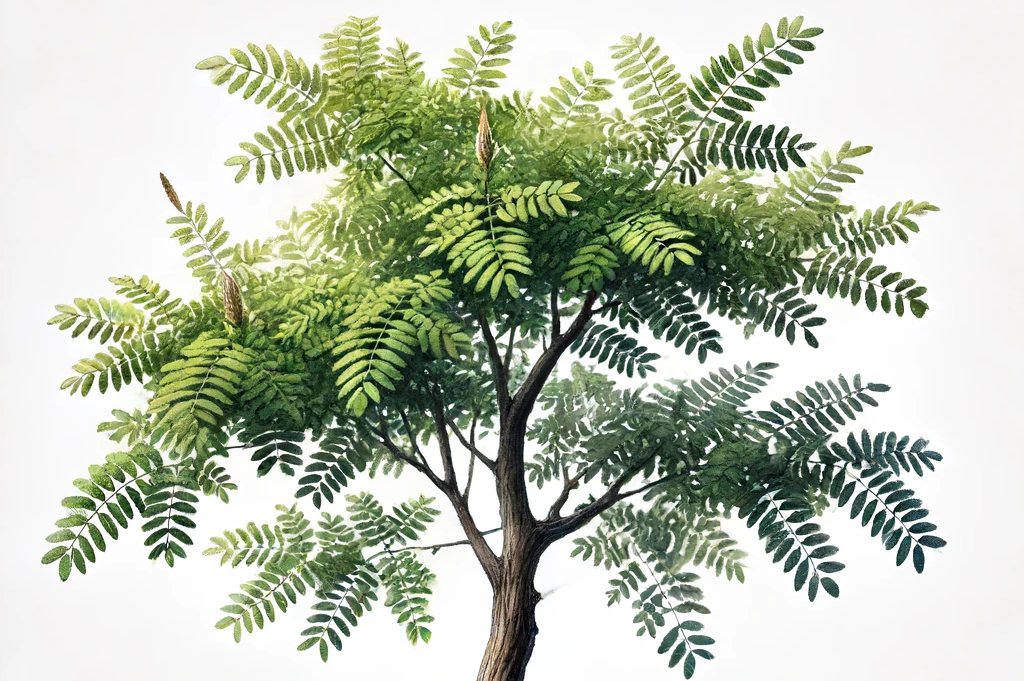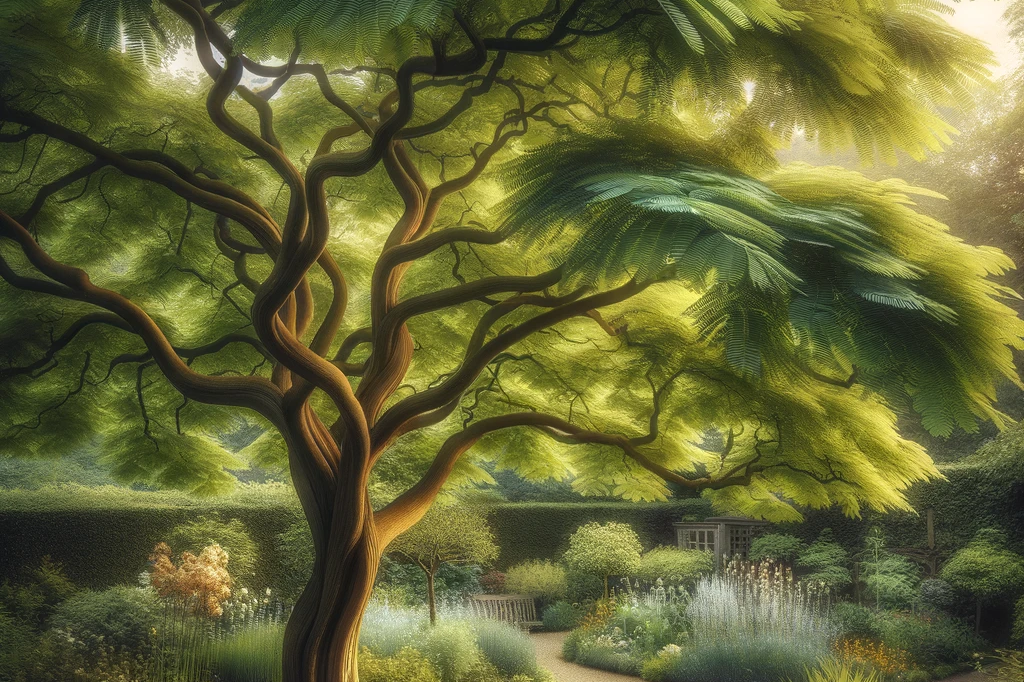Albizia

Introduction: Albizia in nature and in the garden
The albizia belongs to the mimosa family and is mainly native to tropical to subtropical regions. With its impressive flowers and fast-growing branches, it is a popular ornamental tree in many gardens. However, not everything that is beautiful is also safe for our pets. That's why it's important to understand the effects of albizia on dogs.
The components of albizia: what makes it special?
Albizia is made up of various chemical compounds found in its leaves, flowers, bark and seeds. These substances, including glycosides, saponins and tannins, play an essential role in the medicinal and toxicological evaluation of the plant.
Is Albizia poisonous to dogs?
Symptoms of poisoning
Although Albizia may have medicinal properties for humans in certain preparations, the plant is not necessarily safe for dogs. Ingestion of large quantities, especially of leaves and seeds, can lead to symptoms of poisoning. The most common signs of such poisoning include
- Vomiting
- diarrhea
- lethargy
- loss of appetite
- tremors
In severe cases, neurological symptoms such as seizures and incoordination may occur, requiring immediate veterinary attention.
Why should caution be exercised?
The toxicity of albizia to dogs varies depending on the amount ingested and the health of the dog. While small amounts may not cause immediate symptoms, an accumulation of the toxic components over time can lead to health problems.
Dealing with Albizia in dog-friendly gardens
If you have a silk tree in your garden and also have a dog, it's important to take some precautions:
- Restrict your dog's access to the tree. Make sure fallen leaves and seeds are removed regularly to minimize the risk of accidental ingestion.
- Watch your dog carefully when in the garden and look out for signs of possible poisoning.
- Find out about safe alternatives to albizia if you have concerns about your dog's safety.
Although the Albizia is an attractive tree, the safety of our furry family members always comes first. It's important to be aware of the potential risks that some plants can pose to dogs. However, with the right precautions, you can create a dog-friendly garden that is both safe and beautiful.
Properties 6
Are you looking for other ingredients with a specific property?
Just click on them to find more.
If you notice any signs of hypersensitivity or poisoning in your dog, you should see your vet immediately. We are not a substitute for a vet, but we try to be as accurate as possible. Every dog reacts differently and we recommend you get a second opinion or consult your vet if in doubt.
Stay healthy and take good care of your four-legged friend!😊
Similar to Albizia
A botanical overview The plants known as mimosas mostly belong to the genus Mimosa, which comprises over 400 species. This plant family is mainly found in the tropical and subtropical regions of...
The acacia tree is characterized by its unique composition. It contains: Phytochemicals: naturally occurring chemicals found in the leaves, bark and seeds of the tree. Some of these compounds can...
The relationship between dogs and nature is as old as time itself. As dog owners, it is our duty to ensure that the environment in which our faithful companions play and explore is safe for them. The...
The gleditsia (Gleditsia triacanthos) belongs to the legume family and is best known for its distinctive, thorny bark and deeply pinnate leaves. Originally native to North America, it is now found...



